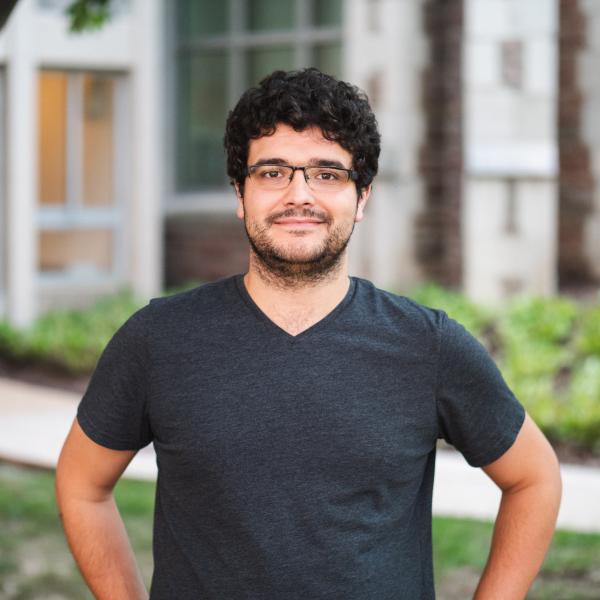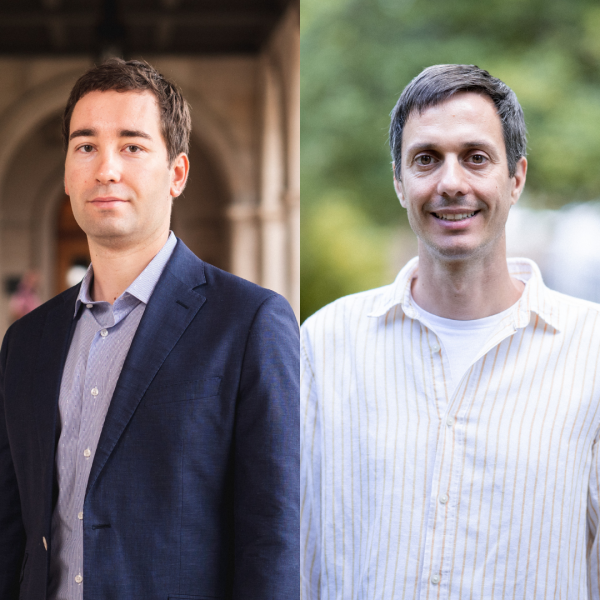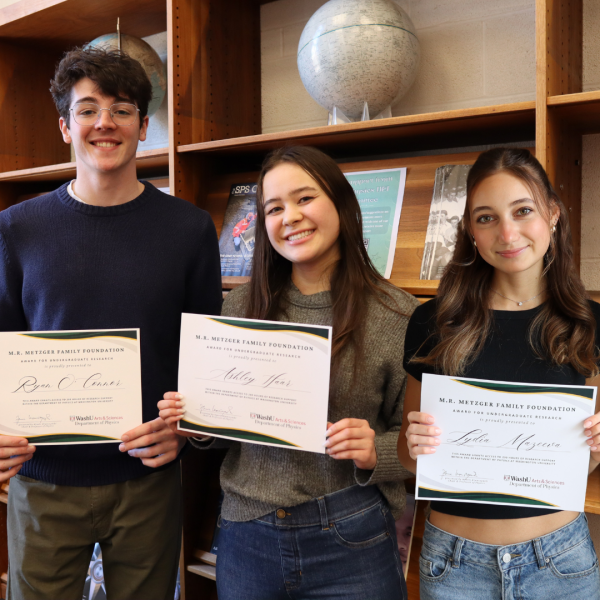The new Center for Quantum Sensors aims to harness the power of quantum mechanics to detect and decipher some of the universe's greatest mysteries.
What size of couch will fit in your living room? How many minutes does it take to get to work? As humans, we’re good at measuring the things we encounter in our everyday lives, and we’re familiar with the tools that help us do that. We are much less skilled at measuring some of the fundamental forces that underpin the universe – for example, the gravitational waves that are generated when black holes collide, or the precise behaviors of electrons when chemical compounds bond together.
The keys to deciphering these phenomena are rooted in quantum mechanics. And channeling the immense potential of that field to better detect and understand the world around us is the goal of WashU’s Center for Quantum Sensors.
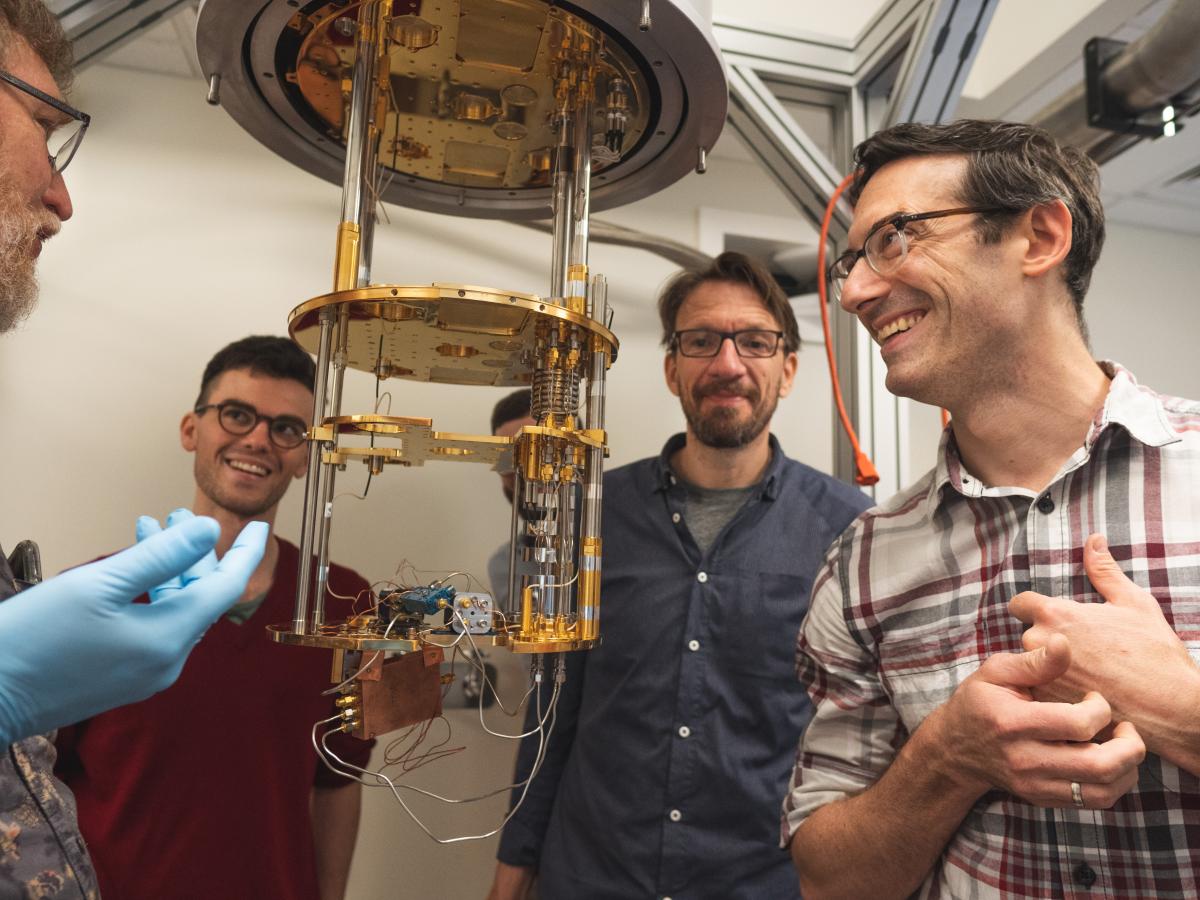
The center is the brainchild of Henric Krawczynski, Kater Murch, Jim Buckley, and Erik Henriksen, all of the Department of Physics. With their collaborators, and key equipment support from the McDonnell Center for the Space Sciences, they aim to develop strategies and technologies that harness the principles of quantum mechanics – and the various tricks that field has unlocked – to measure the world around us as accurately as physically possible, reaching far beyond the limits of our current tools. And their effort is quite timely: Congress recently passed the National Quantum Initiative Act, a federal program supporting the development of quantum technologies.
Launched last year, the center is a collaboration among researchers in the departments of physics, chemistry, and Earth and planetary sciences, along with the McKelvey School of Engineering and the School of Medicine. It serves as a hub for WashU researchers who are developing cutting-edge sensors and for scientists who actively deploy those sensors in the field. Their expertise ranges from the theoretical physics of dark matter to remote sensing on Mars – and that academic diversity is a feature, not a bug, said Murch, associate professor of physics.
“The ultimate limit of how well you can measure something is set by the rules of quantum mechanics,” said Murch. “Our goal is not only to access those fundamental limits, but also to find clever strategies arising from quantum mechanics to make those limits even more sensitive. And, in doing so, you open incredible windows into the world, into space, new ways to listen to, for example, gravitational waves.” Quantum computing, a field that is gaining momentum in both the physics department and the McKelvey School of Engineering, could play an important role in these efforts. “If harnessed in the right way, you can get that machinery to do something very sophisticated and pop out a simple answer for problems that, so far, seem unsolvable.”
“The ultimate limit of how well you can measure something is set by the rules of quantum mechanics,” said Murch. “Our goal is not only to access those fundamental limits, but to make them even more sensitive. And, in doing so, you open incredible windows into the world.”
The idea actually arose over lunch, Murch explained. WashU’s Department of Physics is extraordinarily diverse, spanning condensed matter, nuclear, and particle physics, astrophysics, and biophysics. That is challenging, in some ways, because it limits the number of close collaborators working directly in the same research community. On the upside, this academic diversity encourages cross-disciplinary collaborations, sparking engagement among researchers from vastly different fields. This breadth brought together Murch, Henriksen, and Buckley in lunchtime discussions about a cutting-edge international collaboration called the Axion Dark Matter Experiment, or ADMX. Based at the University of Washington, the project aims to find the mysterious particle that constitutes the universe’s so-called dark matter.
“We realized it’s a question that spans all three of our interests – high magnetic fields, quantum microwaves, and dark matter,” said Murch. “So, at every lunch, our conversation would turn toward, ‘What can we add to this collaboration?’” The physicists decided to jump into the ADMX project.
Meanwhile, Krawczynski, an experimental astrophysicist, began collaborating with the National Institute of Standards and Technology in Boulder, Colorado, to develop X-ray and gamma-ray detectors with energy resolutions far better than those used in current missions. Krawczynski and his colleagues realized that by including quantum sensors in balloon- and space-borne missions, they could potentially test fundamental concepts in physics, such as Einstein’s theory of gravity and models of element formation in supernova explosions and neutron star mergers.
“Similar technologies could revolutionize not only astrophysics, but could also find spectacular applications in solar system exploration missions,” said Krawczynski. They could also lead to important new collaborations between the Department of Physics and the Department of Earth and Planetary Sciences, he noted.
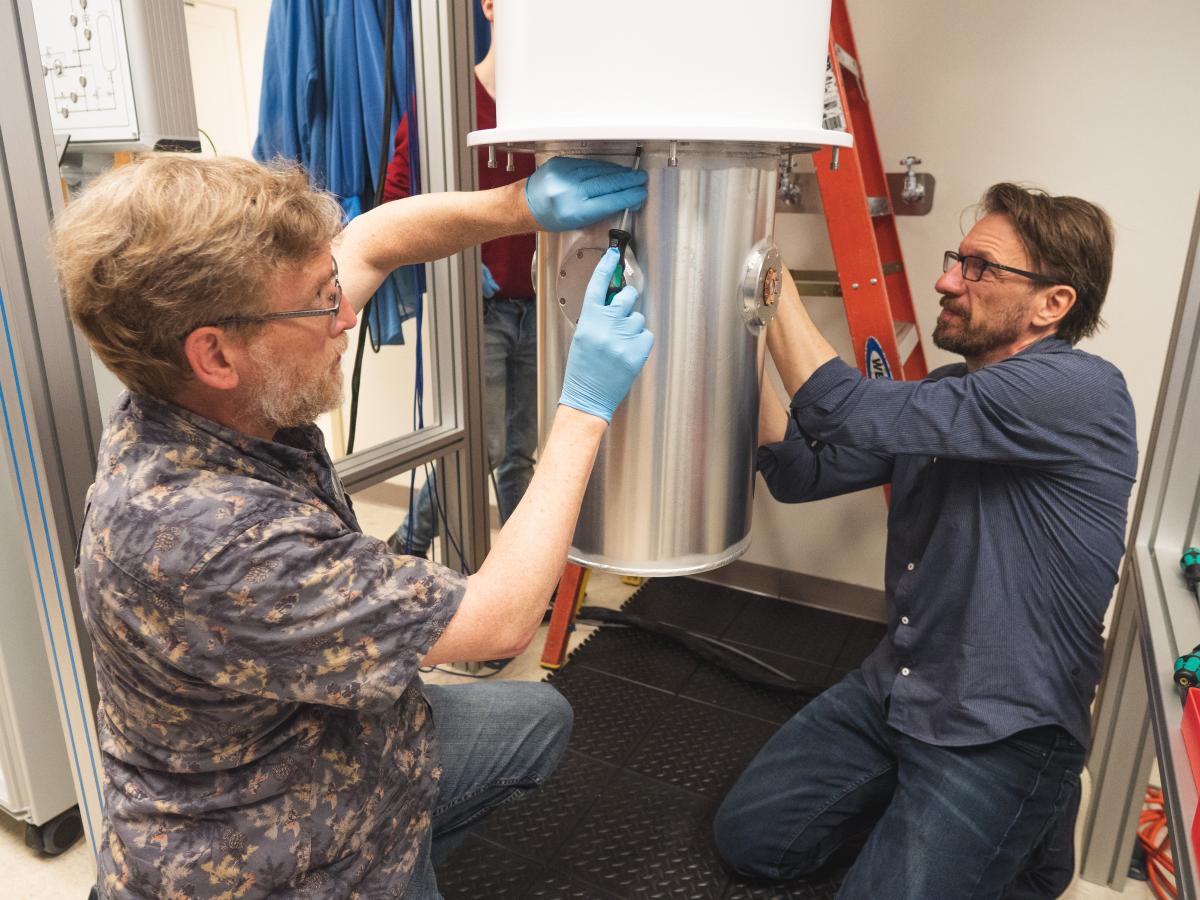
Bolstered by these interdisciplinary collaborations, tireless motivation from Krawczynski, and enthusiastic support from Dean Barbara Schaal, the Center for Quantum Sensors took shape. Conceptualizing and developing sensors for detecting phenomena at the edge of physical possibility takes advantage of the group’s varied expertise, the researchers say. It also pushed them to develop a common lexicon – so they could have fruitful conversations about their disparate fields – and strategies for bringing students into the fold, helping to educate the next generation of cross-disciplinary physicists.
Postdoctoral fellows will play a key role. Following an international search, postdocs Weijian Chen and Jordan Russell joined the Center for Quantum Sensors earlier this year. Rather than working in the lab of a single faculty member, postdocs will develop their own research programs and float among several labs, serving as a sort of glue that binds the center’s various arms of research and forging collaborations among labs that would not traditionally work together. For example, a center postdoc working on nanometer-sized diamonds capable of measuring tiny electric fields might team up with a group of biologists seeking to use that technology to understand biochemical processes in cell walls. The researchers plan to expand that approach to graduate and undergraduate education, as well. Regular seminars, lunches, and retreats will also be important components and, the researchers hope, will help spur a rich variety of collaborations.
“We’re bringing together people who are interested in bridging academic divides,” said Murch. “I see it as a chance to unite our department and, hopefully, our university around really important challenges in physics.”

